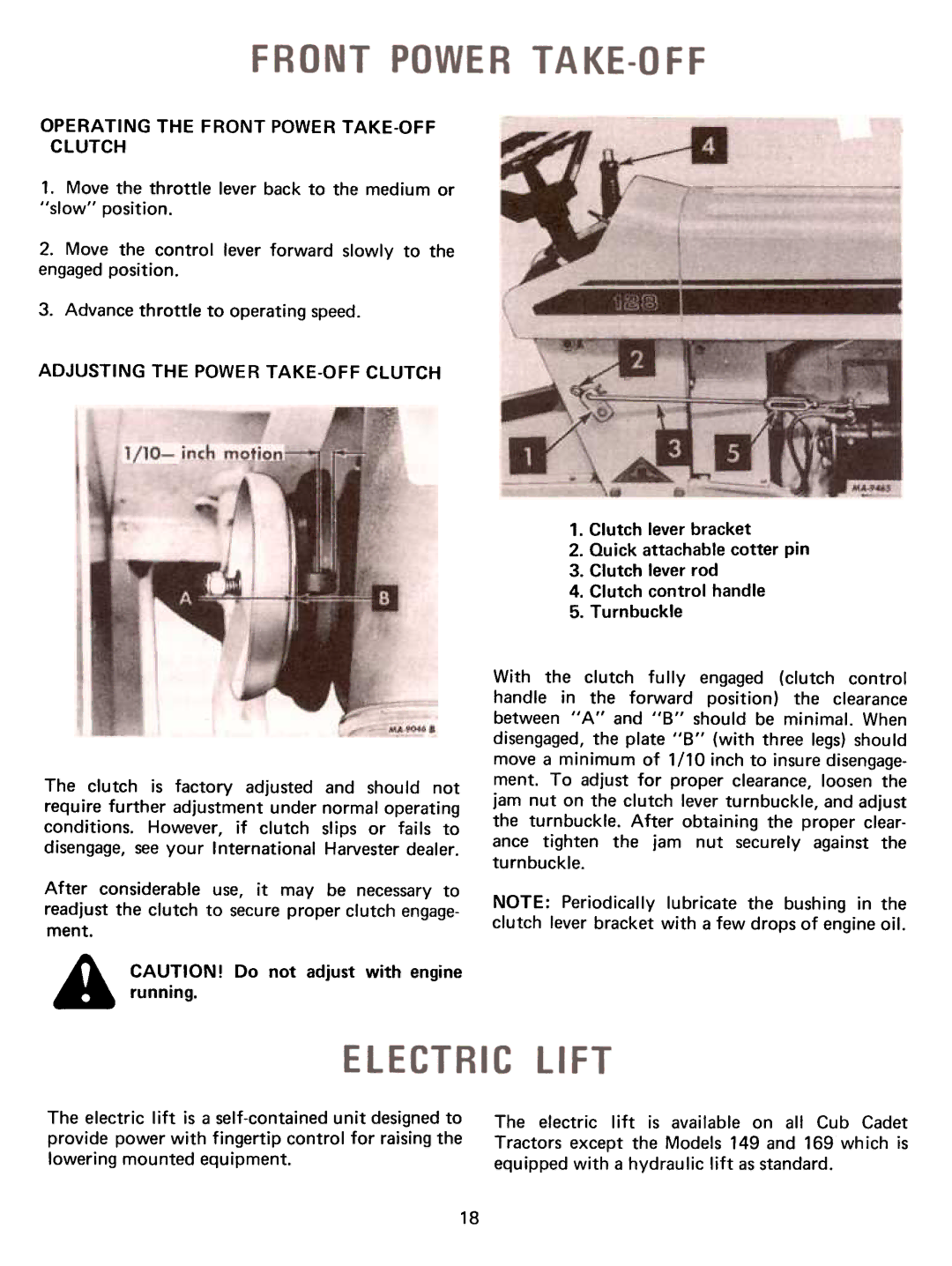108, 149, 169, 129, 128 specifications
The Cub Cadet series of tractors, particularly models 129, 86, 169, 149, and 128, represents a significant chapter in the history of garden and lawn care machinery. Known for their durability and innovative features, these tractors offer a blend of power and functionality that appeals to both homeowners and agricultural enthusiasts.One of the main attractions of these models is their robust construction. Built with a heavy-duty frame, they are designed to withstand the rigors of outdoor tasks such as mowing, tilling, and hauling. The engines are typically Kohler or Tecumseh, providing reliable performance and ample power for various attachments. This capability allows these tractors to excel in tasks, from simple grass cutting to challenging snow removal.
The Cub Cadet 129, for example, offers a 12-horsepower engine, making it suitable for many residential landscaping needs. Its hydrostatic transmission provides smooth operation, allowing for easy speed adjustments without having to shift gears manually, making it user-friendly. Likewise, the 149 model features a similar engine, with the added benefit of a wider cutting deck, improving efficiency for larger lawns.
The Cub Cadet 86 stands out with its unique design and powerful 8 horsepower engine. It also features easy access controls, allowing operators to efficiently switch between various attachments, enhancing overall productivity. This fluidity is mirrored in the 169 model, which integrates advanced steering mechanisms that provide greater maneuverability, allowing users to navigate tight spaces with ease.
Model 128 offers a blend of modern technology and classic charm. It is equipped with a comfortable seat for extended usage and ergonomic controls, responding to the needs of users who spend considerable time on their tractors. The combination of comfort and performance makes these tractors popular among gardening aficionados.
Overall, the Cub Cadet series boasts a legacy of reliability, with a focus on ergonomic design and user-friendly technology. Whether for professional landscaping or personal gardening, these models, with their powerful engines and robust capabilities, continue to be a preferred choice for those looking to enhance their outdoor experience.

